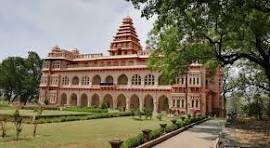
Chandragiri Fort A Testament to Nepal’s Rich History
Discovering the Legacy of Chandragiri Fort: A Testament to Nepal’s Rich History
Perched atop a strategic hill overlooking the Kathmandu Valley in Nepal stands the majestic Chandragiri Fort. Steeped in history and surrounded by breathtaking natural beauty, this ancient fortress holds within its walls tales of conquests, power struggles, and cultural richness. From its origins as a military stronghold to its present-day role as a popular tourist destination, Chandragiri Fort continues to captivate visitors with its historical significance and scenic vistas.
The Historical Origins of Chandragiri Fort:
Traces its roots back to the 17th century, during the reign of King Prithvi Narayan Shah, the founder of the Shah dynasty and the unifier of Nepal. Recognizing the strategic importance of the location, King Prithvi Narayan Shah ordered the construction of the fort in 1743 as part of his military campaign to consolidate control over the Kathmandu Valley.
The fort was strategically positioned to overlook the valley, providing a vantage point for surveillance and defense against potential invaders. Its sturdy walls and commanding position made it a formidable stronghold, allowing the Shah dynasty to assert its authority over the surrounding territories.
Architectural Splendor and Cultural Significance:
Chandragiri Fort is a testament to the architectural ingenuity of its builders. Constructed using traditional methods and materials, the fort features imposing stone walls, intricately carved wooden windows, and ornate gateways that reflect the artistic craftsmanship of the time.
Beyond its architectural significance, holds immense cultural importance for the people of Nepal. It serves as a symbol of national pride and heritage, reminding visitors of the country’s rich history and enduring spirit of resilience.
Tales of Triumph and Tragedy:
Throughout its history, has witnessed its fair share of triumphs and tragedies. From repelling invading forces to enduring natural disasters, the fort has stood as a silent witness to the ebb and flow of history.
One of the most notable events in the fort’s history is its role in King Prithvi Narayan Shah’s conquest of the Kathmandu Valley. The fort served as a strategic base from which the Shah dynasty launched its military campaigns, ultimately leading to the unification of Nepal under a single rule.
However, the fort also bore witness to tragedy, particularly during times of conflict and upheaval. In the centuries following its construction, suffered damage from various wars and invasions, leading to periods of neglect and decay.
Restoration and Preservation Efforts:
In recent years, efforts have been made to preserve and restore to its former glory. Recognizing its historical and cultural significance, the Nepalese government, along with local authorities and heritage organizations, has undertaken initiatives to conserve the fort and promote tourism in the region.
Restoration efforts have focused on repairing damaged structures, reinforcing walls, and preserving the unique architectural features of the fort. Additionally, interpretive signage and guided tours have been introduced to help visitors understand the historical importance of Fort and its place in Nepal’s heritage.
Chandragiri Fort Today: A Popular Tourist Destination:
Today, Chandragiri Fort stands as one of Nepal’s premier tourist attractions, drawing visitors from around the world to experience its rich history and breathtaking views. The fort offers a glimpse into Nepal’s past, allowing visitors to explore its ancient ramparts, courtyards, and temples while taking in panoramic vistas of the Kathmandu Valley below.
In addition to its historical and cultural significance, has become a hub for outdoor recreation and adventure tourism. Visitors can enjoy activities such as hiking, birdwatching, and photography amidst the fort’s scenic surroundings, making it an ideal destination for nature enthusiasts and history buffs alike.
Conclusion:
A testament to Nepal’s rich history and cultural heritage. From its origins as a military stronghold to its present-day role as a popular tourist destination, the fort continues to captivate visitors with its architectural splendor, historical significance, and scenic beauty.
As efforts to preserve and promote Chandragiri Fort continue, it remains a beacon of national pride and a symbol of Nepal’s enduring spirit. Whether exploring its ancient ramparts or simply taking in the panoramic views, visitors to are sure to be inspired by the legacy of this remarkable historical landmark.